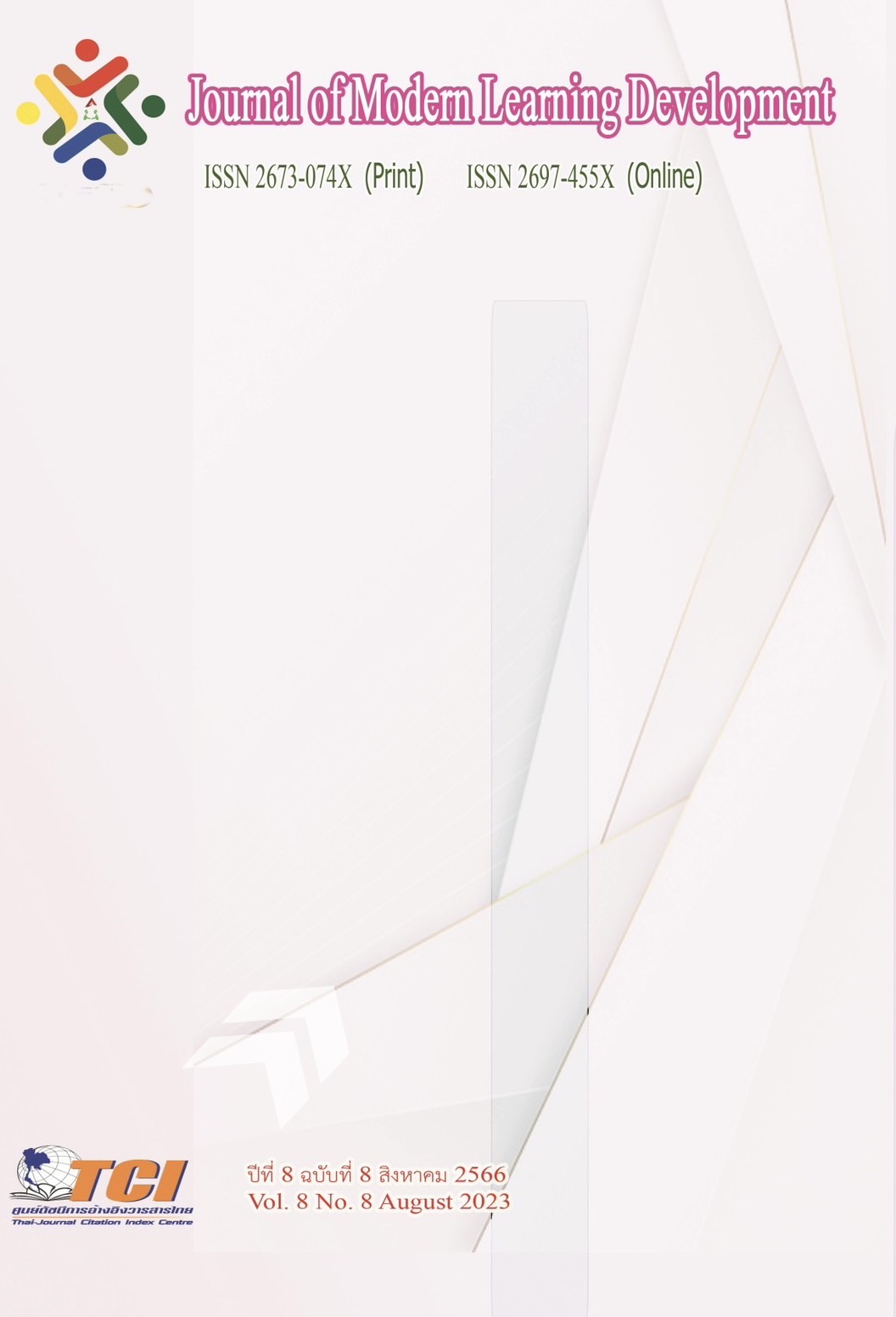A development of Electronic books (E-Bookss) in Mathematics subject on addition subtraction integers for Mathayomsuksa 1 Students Bankaeng School
Main Article Content
Abstract
The purpose of this research were to :1) construct and find the effectiveness of mathematic electronic books in addition subtraction integers for mathayomsuksa 1 students to be effective, as of the standardized criterion 80/80, 2) compare the achievement between pre and post teaching on mathematics subject: addition subtraction integers for mathayomsuksa 1 students. The population used in this research was mathayomsuksa 1 students at Bankaeng school, Semester 1, Academic Year 2022. The subjects were 10 people.
The research tools consisted 1) mathematic electronic books in addition subtraction integers for mathayomsuksa 1 students, 2) lesson plans by electronic books (e-Books) on addition subtraction integers for mathayomsuksa 1 students and 3) multiple choice achievement test with its reliability values was 0.90. The statistics which used for analyzing data were mean, standard deviation and Nonparametric Statistics by using The Wilcoxon signed - rank test.
The results revealed that the initial.
1) Electronic Book on Mathematics about addition subtraction integers for mathayomsuksa 1 students indicated 81/80.11 of the efficiency, which following the specified criteria
2) The post-test scores of students learning with an Electronic Book on Mathematics about addition subtraction integers were statistically higher than the pretest score at .05 level
Article Details
References
กระทรวงศึกษาธิการ. (2560). ตัวชี้วัดและสาระการเรียนรูแกนกลาง กลุ่มสาระการเรียนรู้คณิตศาสตร์ (ฉบับปรับปรุง พ.ศ. 2560) ตามหลักสูตรแกนกลางการศึกษาขั้นพื้นฐาน พุทธศักราช 2551. กรุงเทพมหานคร: โรงพิมพ์ชุมนุมสหกรณ์การเกษตรแห่งประเทศไทย.
จิตราภา กาวิชัย และอภิชา แดงจำรูญ. (2563). การพัฒนาหนังสืออิเล็กทรอนิกส์ เรื่องเศษส่วนเพื่อพัฒนาผลสัมฤทธิ์ทางการเรียนวิชาคณิตศาสตร์ สำหรับนักเรียนชั้นประถมศึกษาปีที่ 5 โรงเรียนคลองหนองใหญ่ (ทองคำ ปานขำอนุสรณ์). วารสารนวัตกรรมการศึกษาและการวิจัย. 5 (2), 238-251.
นวกนก ศรทอง. (2561). การศึกษาผลสัมฤทธิ์ทางการเรียนวิชาคณิตศาสตร์ เรื่อง รูปสามเหลี่ยมของนักเรียนชั้นประถมศึกษาปีที่ 5 โดยใช้หนังสืออิเล็กทรอนิกส์ (e-book). ออนไลน์. สืบค้นเมื่อ 10 มกราคม 2565. แหล่งที่มา: http://www.edu-journal.ru.ac.th/index.php/abstractData/view Index/2291.ru
นิภา ศรีไพโรจน์. (2533). สถิตินอนพาราเมตริก. (พิมพ์ครั้งที่ 2). กรุงเทพมหานคร: โอเดียนสโตร์.
วรกฤษณะ ทองเชื้อและคณะ. (2551). การพัฒนาหนังสืออิเล็กทรอนิกส์ เรื่อง วัดชลธาราสิงเห (วัดพิทักษ์แผ่นดินไทย). วิทยานิพนธ์ปริญญาศึกษาศาสตรมหาบัณฑิต สาขาวิชาเทคโนโลยีและสื่อสารการศึกษา. บัณฑิตวิทยาลัย: มหาวิทยาลัยนเรศวร.
เว็บไซต์บล็อกเกอร์ (2560). ความจำเป็นที่ไม่ควรมองข้าม กับคำว่า "การเรียนคณิตศาสตร์". ออนไลน์. สืบค้นเมื่อ 10 มกราคม 2565. แหล่งที่มา : http://satorn-den.blogspot.com/2017/03/blog-post.html
ศิโรรัตน์ ศรีนุ่น. (2560). พัฒนาการจัดการเรียนรู้โดยใช้การ์ตูนแอนิเมชัน เรื่อง การให้เหตุผลที่มีต่อผลสัมฤทธิ์ทางการเรียนวิชาคณิตศาสตร์ของนักเรียนชั้นมัธยมศึกษาปีที่ 4. วิทยานิพนธ์ศึกษาศาสตรมหาบัณฑิต สาขาเทคโนโลยีและสื่อสารการศึกษา. บัณฑิตวิทยาลัย: มหาวิทยาลัยรามคําแหง.
สำนักวิทยบริการและเทคโนโลยีสารสนเทศ มหาวิทยาลัยราชภัฏนครปฐม. (2561). ทักษะการเรียนรู้ในศตวรรษที่ 21. ออนไลน์. สืบค้นเมื่อ 10 มกราคม 2565 แหล่งที่มา: file:///C:/Users/Dell/ Downloads/20161129081543_PR%20arit%20skill%20in%2021.pdf
สุนันท์ สีพาย. (2562). บทบาทของครูไทยในการศึกษา 4.0. วารสารการวัดผลการศึกษามหาวิทยาลัยมหาสารคาม. 25 (2), 3-14.


